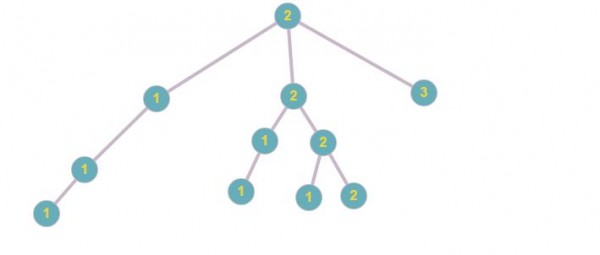In such question where at each step choices get ruled out and set is small better to use tree method.
The four digit number is $d_1d_2d_3d_4$ and we start by making a tree rooted by $d_4$. This number can be any of the number from {1,2,3}.
Then, based on $d_4$ we construct the next level of tree what next nodes can it connect to so that we won't break the property of the digits such that they are non-decreasing. Have a look at trees.

The tree is not built fully for the cases where we break the non-decreasing property like in above tree when $d_3$ is 2 or 3 we didn't continue to build that tree. So, we won't count those cases.


Finally in all three trees count the number of leaf nodes which are at a height of 3 and thus our 4 digited number maintaining the non-decreasing property.
so total such numbers are 1+4+10=15